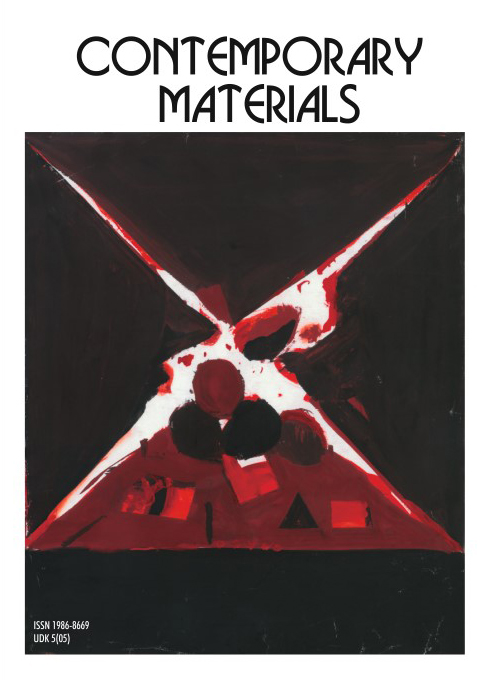COMPARATIVE ANALYSIS OF SUBCUTANEOUS CONNECTIVE TISSUE RESPONSES TO CALCIUM ALUMINATE AND NANOSTRUCTURED TRICALCIUM SILICATE NANOMATERIALS IN MOUSE MODELS
DOI:
https://doi.org/10.7251/COMEN2401104JAbstract
This study aimed o evaluate connective tissue reaction to experimental nanomaterial based on calcium aluminate (ALBO-CA) and commercial nanostructured tricalcium silicate DiaRoot Bioaggregate (DiaDent Group International, Burnaby, BC, Canada) in Wistar rats.The study included 36 rats aged from 10 to 11 weeks. In all animals, an incision took place on the back and two pockets of 15 mm in depth were made, in which sterile polyethylene tubes with test materials (ALBO-CA -Group F, Diaroot Bioaggregat- Group C) were implemented. The empty half of the tubes represented a negative control. After 7, 15, and 30 days (n=12), the animals were euthanized, and the tissues were processed for histological evaluation using hematoxylin-eosin (H&E) staining. Patohystological analysis included: inflammation, bleeding, fibrous capsule, and tissue integrity around the implanted material. Data were analyzed by the Mann -Whitney U test.ALBO-CA induced a statically significantly less inflammatory response after 15 (U=42.000, Z=-2.460, p=0.014) and after 30 days (U=42.000, Z=-2.198 p=0.028). At the end observation period significantly less vascular congestion (U=42.000, Z=-2.460, p=0.014) and significantly greater preservation of connective tissue integrity was noted (U =36.000, Z=-2.769, p=0.006) after ALBO-CA implantation compared to Diaroot Bioaggregate. There were no statistically significant difference in the fibrous capsule formation between the tested materials across all observation periods. The tested materials proved to be biologically acceptable, with the experimental nanostructured ALBO-CA showing a slightly better tissue response after subcutaneous implantation in rats.
